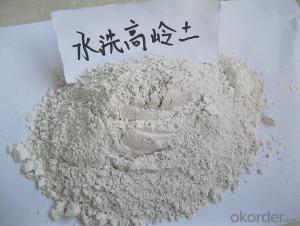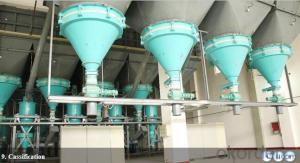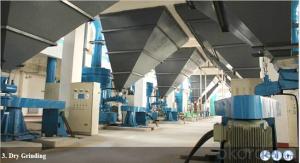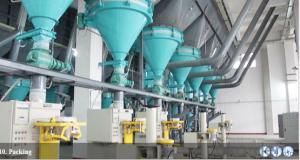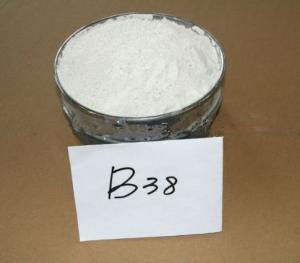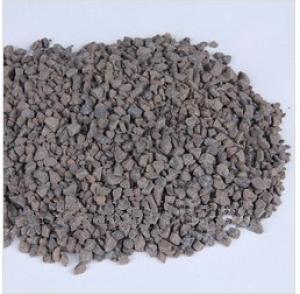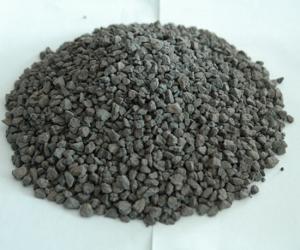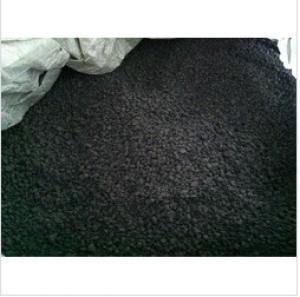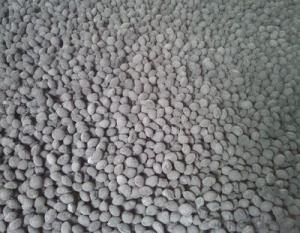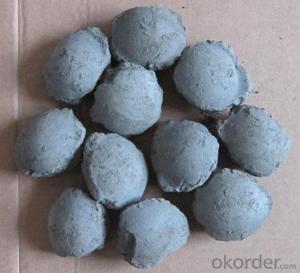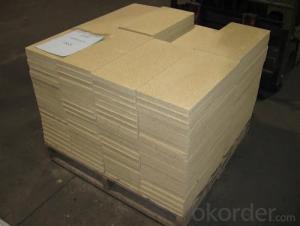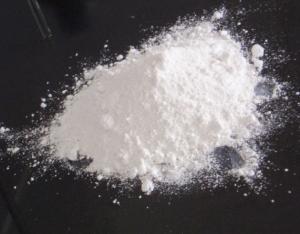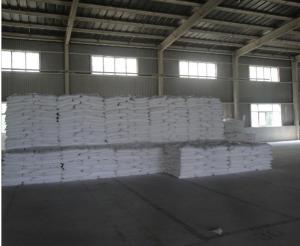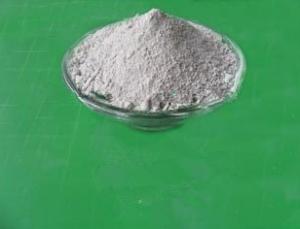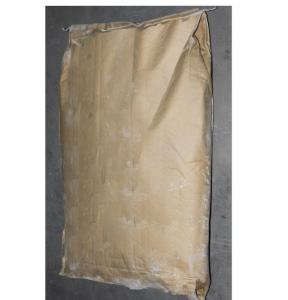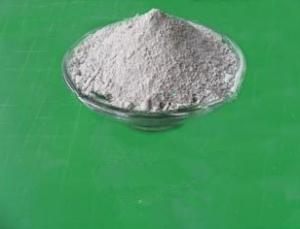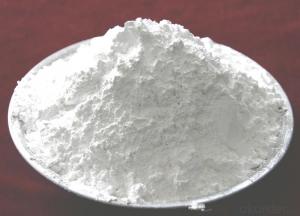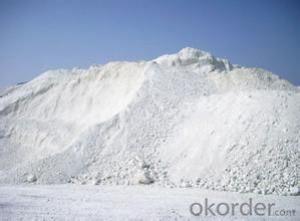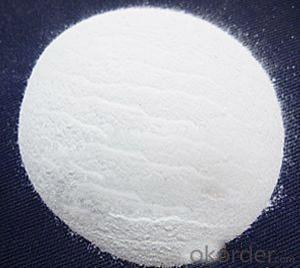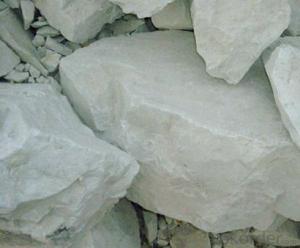CALCINED KAOLIN FOR COATING (GB-CK-96) SGS test
- Loading Port:
- Tianjin
- Payment Terms:
- TT OR LC
- Min Order Qty:
- 25 m.t.
- Supply Capability:
- 12000 m.t./month
OKorder Service Pledge
OKorder Financial Service
You Might Also Like
1. Benefits and Application
The GB-CK series of Kaolin based pigments are produced through delamination,
calcination and classification. The well-controlled processes ensure the GB series have no coarse particles and maintains an absolute minimum of 325 mesh residue, so the end user can achieve a high Hegman grind. The GB series pigments also have high brightness, strong hiding powder and superior dispersibility, and it is widely applied in latex paint, powder coating and electrophoresis coating.
Its main benefits are:
It’s the best extender of titanium dioxide with excellent opacity that can
improve efficiency and cut costs by partly replacing titanium dioxide;
It can easily disperse in water based systems;
It offers superfine particle and with excellent anti-settling property; It is inert to most acids and
alkaline at ambient temperature and offers good anticorrosive capabilities.
2. Typical Physical Properties
Item | GB-CK90 | GB-CK92 |
Brightness(T457) | 90.5%min | 92%min |
Particle Size (0-2micron)% | 50+/-2 | 60+/-5 |
Particle Size (0-10micron)% | 94% | 97% |
Refractivity | 1.62 | 1.62 |
Screen residue (325 mesh %) | 0.01max | 0.01max |
Oil Absorbency (g/100g) | 35+/-5 | 50+/-5 |
Dispersion (micron) | 55max | 50max |
pH | 5.5-7.0 | 5.5-7.0 |
Bulk Density (kg/m3) | 600 | 500 |
Specific Gravity (kg/m3) | 2600 | 2600 |
Moisture (%) | 0.5max | 0.5max |
3. Typical Chemical Properties
SiO2(%) | Al2O3(%) | Fe2O3(%) | TiO2(%) | CaO(%) | MgO(%) | CuO(%) | K2O(%) | Na2O(%) | MnO(%) |
52+/-2 | 45+/-2 | 0.50max | 1.5max | 0.4max | 0.2max | 0.004max | 0.05max | 0.15max | 0.004max |
4.Application
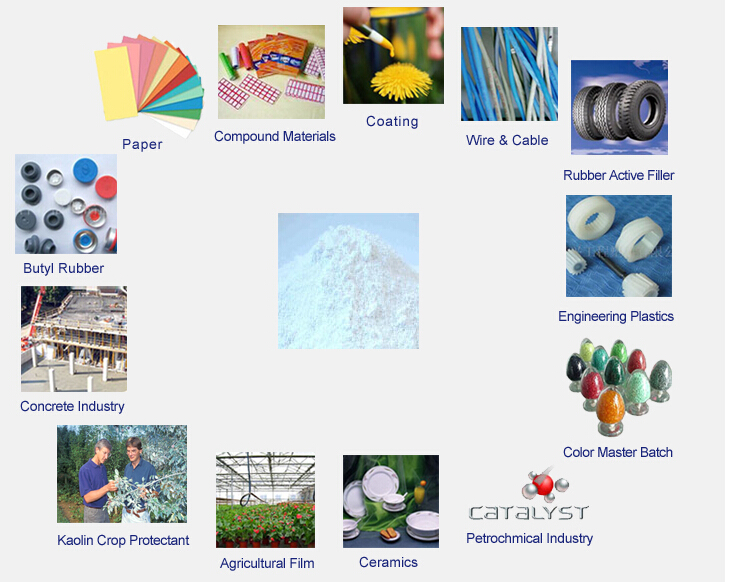
- Q:What is the porcelain glaze porcelain
- The clay is composed of metamorphic mica and feldspar, in which sodium and potassium, calcium and iron loss, water changes into. The glaze is covered in colorless or colored ceramic surface of the glass layer is raw minerals (quartz, feldspar, talc, kaolin etc.) and chemical raw materials according to a certain proportion (part of raw material can be made by grinding glaze frit), applied to the blank surface, under certain temperature and calcining.
- Q:Is activated clay kaolin?
- Usually activated clay refers to the use of bentonite as raw material. But kaolin can also be used as the raw material of activated clay.
- Q:How to remove iron impurities in kaolin and increase their whiteness
- The types of pigment ions are different, and the reagents and methods used are different:1, the surface of the adsorbed kaolinite is Fe3+, that is, when iron exists in the form of Fe2O3, the reaction of Fe3+ with Na2S2O4 is reduced to two valent iron salt, which is removed by rinsing and filtering;2, when the adsorption ion is Fe2+, that is iron in the form of FeS2, the oxidant should be used and its reaction, the oxidation of soluble ferrous sulfate and ferric sulfate, so that it can be washed away colorless oxides;3, the majority of samples containing both Fe3+ and Fe2+, the oxidation reduction combined bleaching method, first with the oxidant and reducing agent will become Fe2+ Fe3+ its reduction to Fe2+. Removed by rinsing, filtering, etc.
- Q:What's the difference between Ye Lashi and kaolin?
- The main components of both are Si and Al compounds. The main difference is that the content of the main components is different. The content of Si and Al of kaolin is close to that of kaolin, and the amount of burning of kaolin is relatively large;
- Q:How to distinguish the good or bad of kaolin?
- Kaolin chemical composition analysis laboratory test kaolin composition is very complex, kaolin chemical composition contains a large number of AL2O3, SiO2 and a small amount of Fe2O3, TiO2, and trace amounts of K2O, Na2O, CaO and MgO.
- Q:Do kaolin have blue and cyan?
- Some trace metal elements which may be a different color, the specific color and the metal or metal oxide flame color color
- Q:How to improve the viscosity of kaolin
- Businessmen can follow close feeding according to the characteristics and viscosity of kaolin, thereby improving the recovery performance of ceramic products, so as to ensure no cracking, high temperature calcining without deformation, improve the success rate of ceramic shaping. At the same time, in the process of making porcelain blank, it is possible to increase the stickiness of kaolin and improve the plasticity ability by using manual trampling and trampling of livestock.
- Q:Is kaolin soluble in water?The dispersion of kaolin in water is very unstable,At least stable 5-6 hours
- Pure kaolin with high whiteness, soft, easy to disperse in water, suspended in plasticity and good adhesion, high excellent electrical insulation properties; has good acid soluble cationic, low resistance and other physical and chemical properties, better exchange. Therefore, kaolin has become the necessary mineral material for dozens of industries, such as paper making, ceramics, rubber, chemicals, coatings, pharmaceuticals and national defense. There are reports that Japan has also used kaolin instead of steel, cutting tools, lathes, drills, and internal combustion engines. Especially in recent years, the rapid development of modern science and technology, the application of kaolin is more extensive, began extensive use of kaolin as new materials in some high-tech fields, and even nuclear reactor space aircraft and spacecraft components with high temperature porcelain, made of kaolin.
- Q:There is a kind of kaolin powder used for making cables. It does not sink in water. It does not damp with a stick. It wants to know what is added in it
- I estimate that this has been modified by kaolin powder, and is modified by aluminate, the aluminate by high speed modifier modified kaolin is insoluble in water, and suspension.
- Q:What are the uses of calcined kaolin?
- Kaolin is widely used in paper industry. There are two main areas. One is used in papermaking (or paper making), and the other is the pigment used in the surface coating process. There are reports that Japan has also used kaolin instead of steel, cutting tools, lathes, drills, and internal combustion engines. Especially in recent years, the rapid development of modern science and technology, the application of kaolin is more extensive, began extensive use of kaolin as new materials in some high-tech fields, and even nuclear reactor space aircraft and spacecraft components with high temperature porcelain, made of kaolin.
1. Manufacturer Overview |
|
|---|---|
| Location | |
| Year Established | |
| Annual Output Value | |
| Main Markets | |
| Company Certifications | |
2. Manufacturer Certificates |
|
|---|---|
| a) Certification Name | |
| Range | |
| Reference | |
| Validity Period | |
3. Manufacturer Capability |
|
|---|---|
| a)Trade Capacity | |
| Nearest Port | |
| Export Percentage | |
| No.of Employees in Trade Department | |
| Language Spoken: | |
| b)Factory Information | |
| Factory Size: | |
| No. of Production Lines | |
| Contract Manufacturing | |
| Product Price Range | |
Send your message to us
CALCINED KAOLIN FOR COATING (GB-CK-96) SGS test
- Loading Port:
- Tianjin
- Payment Terms:
- TT OR LC
- Min Order Qty:
- 25 m.t.
- Supply Capability:
- 12000 m.t./month
OKorder Service Pledge
OKorder Financial Service
Similar products
New products
Hot products
Hot Searches
Related keywords
